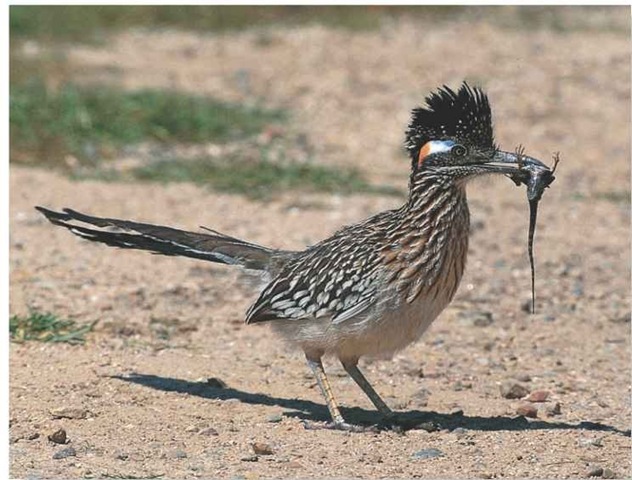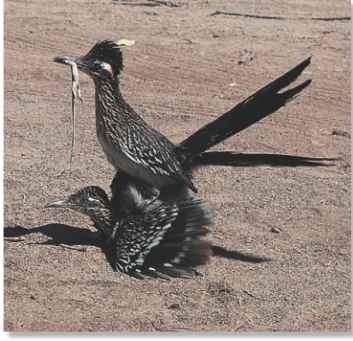ORDER
Cuculiform.es
FAMILY
Cuculidae
GENUS & SPECIES
KEY FEATURES
• Conserves energy during cold desert nights by becoming sluggish, then warms in the morning by exposing its dark dorsal skin to the sun
• Uses sticks, mesquite pods, snakeskin and cattle dung to build its nest in arid, treeless regions
• Escapes the fierce desert heat by seeking shade
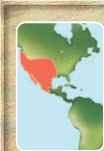
WHERE IN THE WORLD!
Found in Mexico and the southwest U.S. — Arizona, New Mexico, Texas and in parts of California, Nevada, Utah, Colorado, Kansas, Oklahoma, Arkansas and Louisiana
Lifecycle
The greater roadrunner lives up to its cartoon-character image as it dashes across North American desert highways at breakneck speed in pursuit of its prey.
Habitat
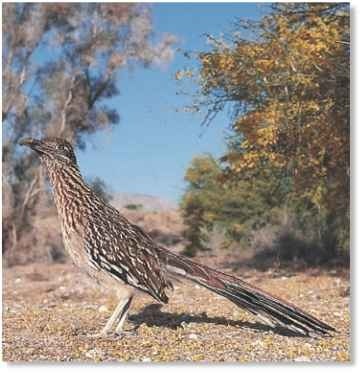
Stop-go predator
The roadrunner sprints in short but very rapid bursts, pausing frequently to look around for prey.
The roadrunner lives in dry, open country especially semi-arid scrub known as chaparral, (alternative name is “chaparral cock”). The bird is common at altitudes below 3,300′.
Some roadrunners live on open farmland and around outskirts of towns. The bird is attracted to cattle ranches, where it dashes onto the pasture occasionally to snap up insects disturbed by the grazing livestock. Although the roadrunner spends most of its life on the ground, it occasionally perches on fence posts and in trees.
A familiar bird of “cowboy country,” the roadrunner is held in high esteem. It is the state bird of New Mexico; in Mexico its popularity is reflected in its local name el paisano, meaning”fellow countryman.” Some Native American tribes used the roadrunners feathers and cross-shaped footprints to drive away evil spirits.
Breeding
Behavior
The roadrunner; which earned its name by running in front of stagecoaches, has entered American folklore on account of its bizarre behavior: It’s so reluctant to fly that, when threatened by a predator, its first defense is to lie motionless on the ground.
The roadrunner flees on foot only when danger gets too close for comfort. When running at full speed, the bird holds its head and tail horizontally. If really necessary, the bird takes clumsily to the air, but usually running in a series of sudden changes of direction leaves its pursuer baffled and beaten.
speed racer
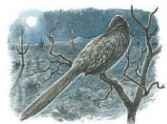
Cooling down…
The roadrunner conserves energy through cold nights by letting its body temperature drop, so it becomes sluggish.
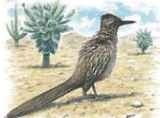
Warming up…
In morning, the bird raises its back feathers to let the sun reach dark skin that acts like a solar panel, absorbing heat and warming blood.
The male courts his intended mate by cooing to her and dancing around her with tail fanned and wings drooping. Once having paired, the two adults remain together for life.
The nest is built in cactus or shrub, several feet above the ground. It’s built from sticks and lined with feathers, leaves, snakeskins and dried cow dung.
Chicks are fed insects and small lizards at first, but can catch some of their own food at less than three weeks old.
Tempting offer The male will present his partner with a lizard only after she’s mated with him.
The average speed of a roadrunner is about 15 mph: the bird takes about 12 steps per second. Its legs move so rapidly that they appear as a blur beneath the body.
If a predator comes too close to its nest, the roadrunner will try to distract it by pretending to have a broken wing.
The greater roadrunner’s song and not beep-beep as portrayed in cartoon films.
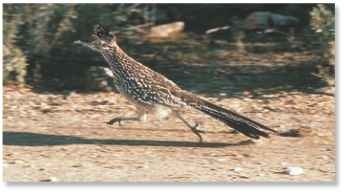

Back in action…
The heat on the special patch of skin quickly restores its normal body temperature. Soon, the bird is fully alert again, ready to hunt.
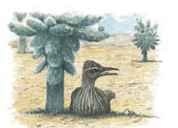
Seeking shade
The roadrunner adjusts its daily behavior to escape the heat. During the hottest hours, it finds a shady shelter from the sun.
Food & hunting
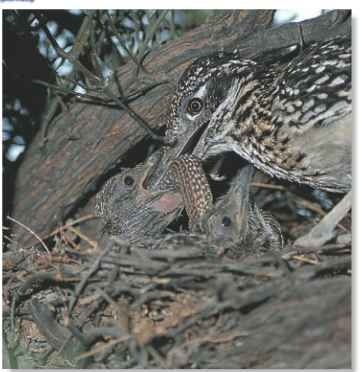
Feeding duty Adults reserve part of their catch for the young.
The roadrunner typically runs a short distance before halting and spying for prey, with its neck stretched high and tail
cocked. It repeats this procedure until it spots a potential meal.
When hunting snakes, however; the roadrunner relies on stealth, speed, agility and power, as it isn’t immune to venom. It outwits its victim in a fast-moving skirmish, seizing the snake by its head and beating it violently on the ground. Despite its prowess as a snake-catcher, the roadrunner feeds mainly on spiders and large insects snatched from the ground or flushed from plants.
Conservation
The naturally harsh and sparsely populated environment in which the roadrunner lives is one of its best safeguards for survival, as this bird is fully equipped to survive extreme conditions of drought and heat. The species was once hunted in the mistaken belief that it preyed on gamebirds, but its popularity among local peoples outweighs any resentment once felt. Of the 127 species in the cuckoo family as a whole, fewer than 20 are considered threatened to any extent.
PROFILE
Greater Roadrunner
Built for life on foot, the roadrunner acquires an intimate knowledge of its territory and uses this to catch prey and escape predators.
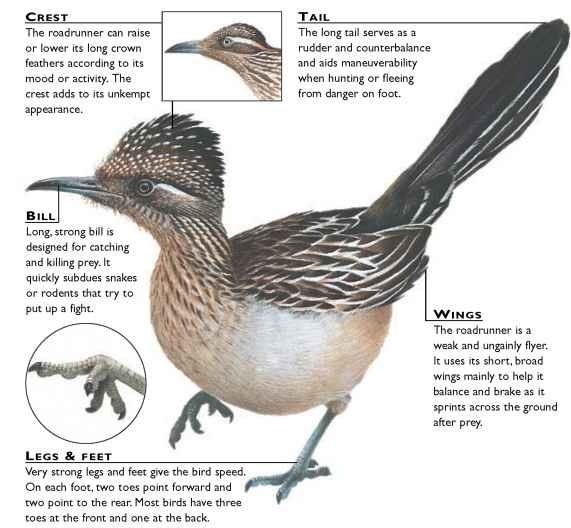
Creature comparisons
The yellow-billed cuckoo, Coccyzus americanus, canorus, is a relatively strong flier traveling
is another North American relative of the direct and low on rapidly beating
roadrunner Unlike the roadrunner, however, it wings and is capable of covering long
flies gracefully. The Eurasian cuckoo, Cuculus distances.

Yellow-billed cuckoo
Eurasian cuckoo
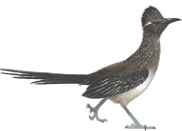
Greater roadrunner
| VITAL STATISTICS | |
| Weight | 7-13 oz. |
| Length | 20.4-24.4″, including a 10″ tail |
| Wingspan | 16-20.4″ |
| Sexual ; Maturity {: | 1 year |
| Mating season | Usually April -May; second brood July-September |
| Number , of Eggs | 2-7; usually 3-5 |
| Incubation Period | 17-20 days |
| Number of Broods | 1, sometimes 2 |
| Typical : Diet | Insects, lizards, snakes, birds, rodents, eggs, fruit, seeds |
| Lifespan | Up to 9 years |
RELATED SPECIES
• The greater and lesser roadrunners are the only species in the Geococcyx genus, within a group of 13 species called ground-cuckoos. The lesser roadrunner is similar to the greater, but has a southerly range in Central America. Road-runners are among about 130 species in the widespread cuckoo family, Cuculidae. I These include 50 species ! of “true” cuckoo, which all lay eggs in the nests I of other species.
